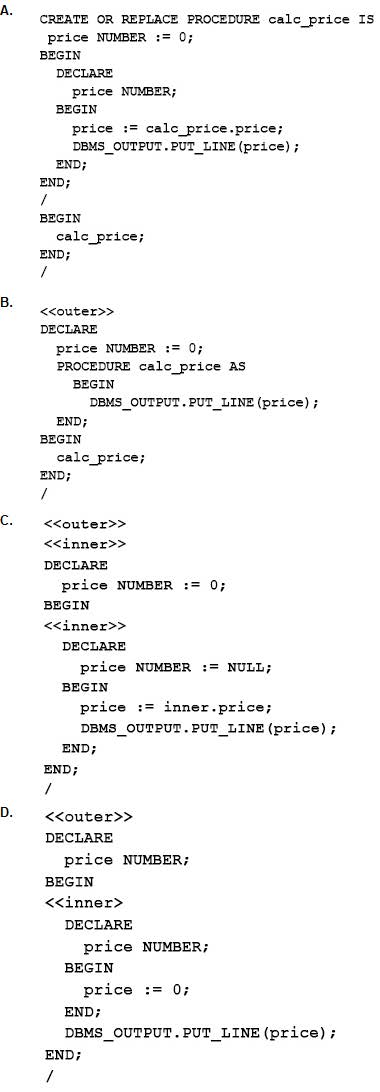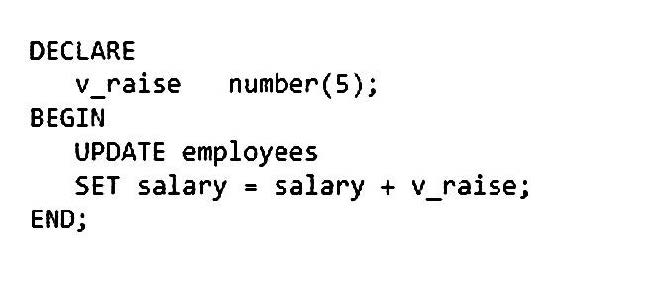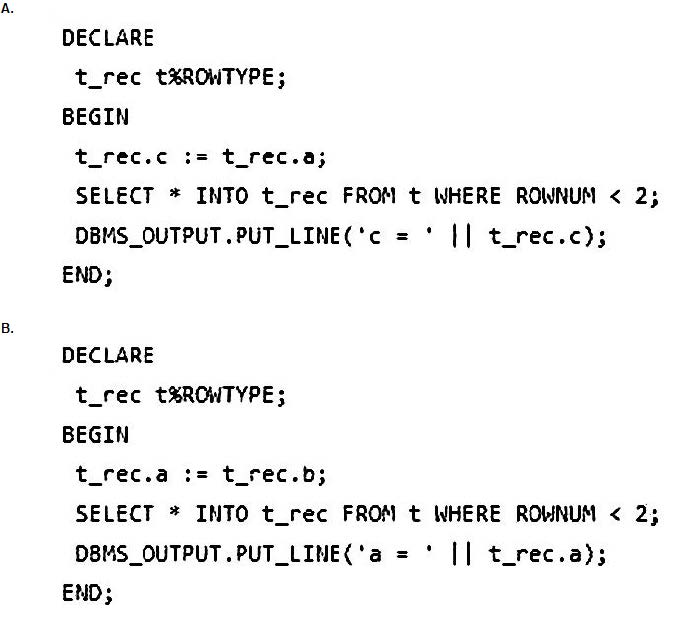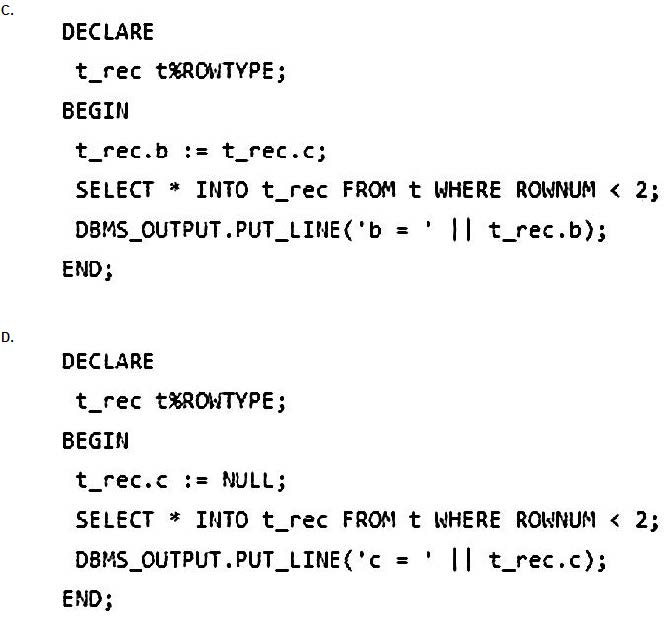1Z0-149 Online Practice Questions and Answers
Questions 4
Examine these statements and output:

The procedure is created successfully.

User ora2 has password ora2 in pdb1.
Which script will execute successfully?

A. Option A
B. Option B
C. Option C
D. Option D
Questions 5
Which two blocks of code display a numerical zero? (Choose two.)

A. Option A
B. Option B
C. Option C
D. Option D
Questions 6
Which two are valid MODIFIER values for the PLSQL_WARNINGS parameter? (Choose two.)
A. DISABLE
B. ENABLE
C. ERROR
D. ALL
E. SEVERE
Questions 7
Examine this anonymous block of code:

Which two statements are true about the results of executing it? (Choose two.)
A. It will set all salaries to 0 if it executes successfully.
B. It will always return a compile time error because it lacks an EXCEPTION section.
C. It might return a run time error depending on who invokes it.
D. It will always automatically initialize v_raise.
E. It will set all salaries to NULL if it executes successfully.
F. It will always return a run time error because v_raise is not initialized.
Questions 8
Which is true about counter variables in a FOR loop?
A. It must explicitly be declared.
B. It can be modified in the body of the loop.
C. It cannot be NULL.
D. It is accessible outside the body of the loop.
Questions 9
Examine these statements which execute successfully:

Which anonymous block executes successfully?


A. Option A
B. Option B
C. Option C
D. Option D
Questions 10
Which three SQL statements, embedded in PL/SQL, typically benefit from using variables declared with %ROWTYPE? (Choose three.)
A. CREATE
B. DROP
C. UPDATE
D. SELECT
E. DELETE
F. ALTER
G. INSERT
Questions 11
Examine this row of data from the EMPLOYEES table:

Now, examine this block of code which executes successfully:

What is the value of v_commission?
A. 5000
B. 15000
C. 2500
D. 10000
Questions 12
In which type of trigger can :OLD and :NEW identifiers be used?
A. ROW
B. AFTER SUSPEND
C. AFTER STATEMENT
D. BEFORE STATEMENT
Questions 13
For which three SYSTEM EVENTS can triggers be created? (Choose three.)
A. DDL
B. AFTER AUDIT
C. BEFORE ANALYZE
D. SHUTDOWN
E. SERVERERROR
F. STARTUP
G. BEFORE GRANT
